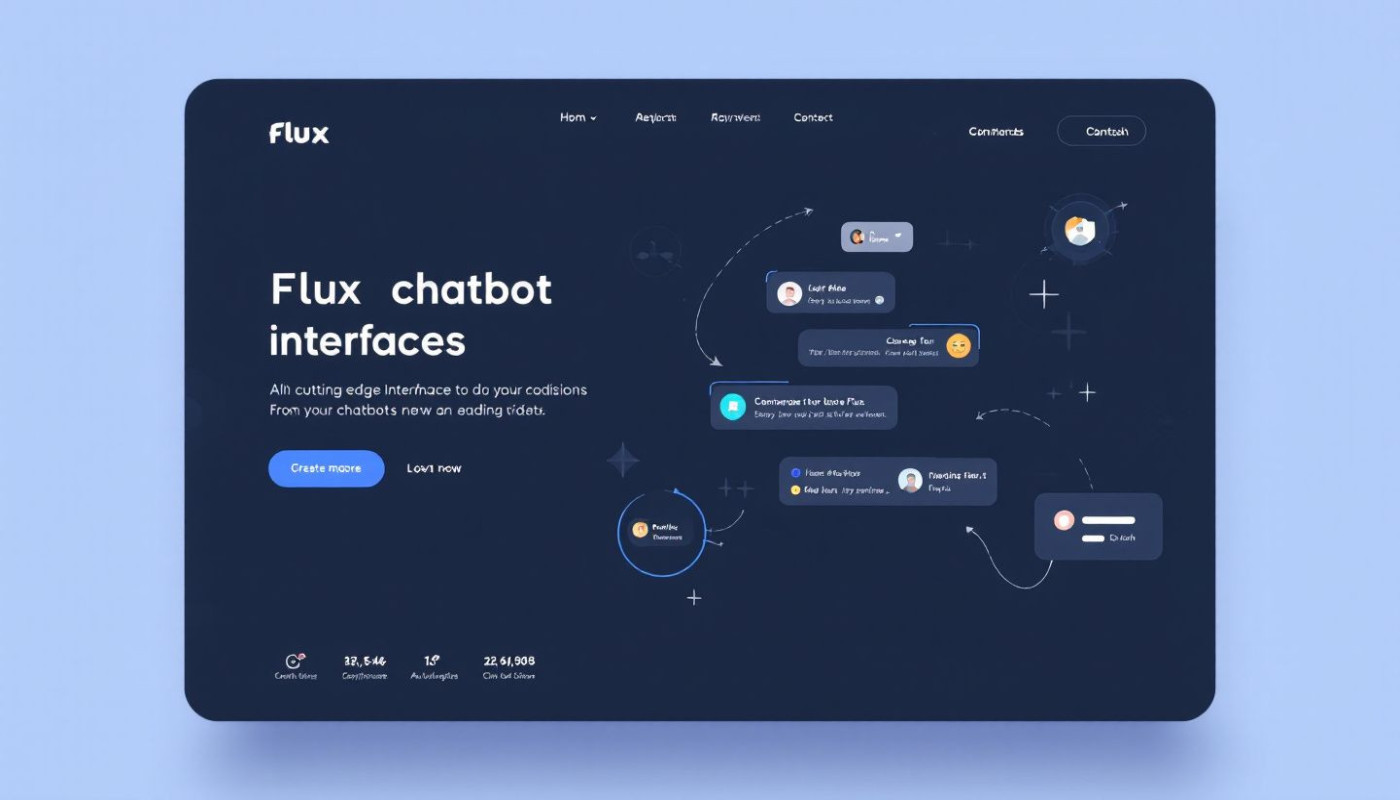Table of contents
Step into a world where customer service is not just reactive, but visionary and adaptive. With the rapid evolution of chatbot builders, businesses now wield unprecedented tools to personalize and streamline customer interactions. This exploration unveils the transformative impact of advanced chatbot technology, inviting you to uncover how automated solutions are setting new standards for customer engagement and operational efficiency.
Harnessing ai-powered automation in customer support
Advancements in artificial intelligence have introduced a transformative era for customer support, where natural language processing and machine learning empower virtual agents to engage in context-rich conversations. Through these technologies, chatbots can now interpret nuanced language, detect intent, and provide tailored responses that closely mimic human interaction. Conversational interfaces further bridge the gap between traditional customer service channels and digital communication, offering users an intuitive way to resolve their concerns without waiting in long queues or being transferred between departments.
Chatbot builder platforms play a pivotal role in this transformation by equipping organizations with user-friendly tools to quickly design, test, and deploy virtual agents across multiple channels. These platforms frequently feature drag-and-drop interfaces and pre-built templates, making it possible to create sophisticated conversational flows without requiring advanced programming knowledge. As a result, businesses can efficiently launch solutions that address common inquiries, automate routine tasks, and seamlessly pass complicated cases to human representatives for further attention. This agility not only accelerates the implementation process but also enables continuous adaptation as customer expectations evolve.
Reduction in response times stands out as one of the most noticeable benefits, as ai-driven virtual agents can operate around the clock and tackle multiple conversations simultaneously. Machine learning algorithms continuously refine chatbot performance by analyzing previous interactions, which leads to ever-improving accuracy in both understanding customer queries and providing relevant solutions. Scaling operations becomes significantly easier, since virtual agents absorb increasing volumes of customer requests without necessitating proportional increases in staff, thus offering a responsive approach to fluctuating demand. This increased efficiency translates into higher customer satisfaction and reduced operational strain on support teams.
Among the various solutions available, Botnation AI distinguishes itself by furnishing a free, nocode, ai tool that empowers businesses of any size to efficiently automate customer interactions without technical barriers. Leveraging such accessible platforms allows organizations to experiment with conversational automation and innovate rapidly, regardless of their technical expertise. This democratization of ai-driven support paves the way for more engaging customer experiences and helps foster lasting brand loyalty. As chatbot builders continue to advance, the future of customer service appears set for even deeper integration with intelligent automation, creating opportunities for both cost savings and enhanced user engagement.
Personalized customer journeys with intelligent chatbots
Modern chatbot builders have evolved beyond simple automated responses, now integrating sophisticated tools such as user data analysis, sentiment detection, and contextual awareness. By capturing details like purchase history, browsing behavior, and real-time emotions, these platforms create a nuanced understanding of each user. This intelligence allows businesses to adjust conversations in real time, enabling the chatbot to change its tone, offer proactive guidance, or seamlessly escalate to a human agent if frustration is detected. The result is a dynamic, adaptive interaction that resonates with users on a personal level.
Businesses capitalizing on these developments can craft dialogues that not only answer queries but also provide curated product recommendations and personalized advice. For instance, when a returning customer seeks gift ideas, an intelligent chatbot can reference past purchases and suggest compatible items, even inquiring about the recipient’s preferences to refine its suggestions. If the chatbot detects excitement or satisfaction in a user’s tone, it might introduce loyalty rewards or invite feedback, deepening engagement and fostering long-term relationships. This approach ensures each customer feels recognized and valued, increasing the likelihood of repeat business.
Real-world applications demonstrate how chatbots equipped with sentiment and context awareness drive measurable improvements in customer satisfaction. In online retail, advanced chatbots now anticipate needs before a question is fully articulated—recommending accessories to complement a shopper’s basket or offering expedited delivery options during a time-sensitive transaction. Travel companies deploy chatbots that adjust itineraries based on changing preferences or disruptions, enhancing the travel planning experience. These real-time, personalized interactions not only streamline support but also create a sense of genuine care, setting new standards for digital customer service excellence.
Integrations and omnichannel experiences for seamless service
Sophisticated chatbot builders now offer deep integrations with customer relationship management (CRM) systems, helpdesk software, and popular messaging platforms. This interconnectedness ensures that customer data, preferences, and past interactions are instantly available across all touchpoints. For example, when a customer moves from a website chat to a mobile messaging app, the chatbot can maintain context, avoiding repetitive questions and delivering a unified experience. Such continuity not only enhances user satisfaction but also boosts a brand’s credibility in delivering attentive service.
Omnichannel experiences hinge on the ability to transfer conversations or queries seamlessly between digital channels and human agents. Advanced chatbot builders facilitate real-time handoffs, passing the full conversation history and relevant data to live agents without interruption. Imagine a customer begins troubleshooting with a chatbot on Facebook Messenger and needs specialized support; the chatbot can escalate the issue to an agent on a helpdesk tool, who immediately sees the entire chat history and customer profile. This approach minimizes frustration and accelerates resolution times, especially for complex or sensitive issues.
Ensuring fluidity across platforms requires careful technical planning. APIs act as bridges, allowing chatbots to exchange information with a wide variety of third-party systems, from ticketing tools to enterprise CRMs. Developers need to consider authentication protocols, such as OAuth, to control access and protect sensitive data. Middleware solutions can also help synchronize data between disparate systems, preventing discrepancies and ensuring that all participants—human or digital—have up-to-date information. This technical orchestration underpins the reliability and effectiveness of omnichannel service.
Data security is a top concern when integrating multiple platforms, as each system introduces potential vulnerabilities. Encryption, both in transit and at rest, is a fundamental safeguard for customer information flowing between chatbots, CRMs, and other services. Businesses should also enforce strict access controls and regular audits to monitor integrations for unusual activity or unauthorized access. By prioritizing robust security practices, organizations can confidently embrace advanced chatbot builders to deliver seamless, omnichannel support while preserving customer trust.
Training, analytics, and continuous chatbot improvement
Modern chatbot builders leverage deep learning algorithms to enable chatbots to interpret natural language, understand context, and manage increasingly complex customer interactions. By integrating analytics dashboards, these platforms provide businesses with detailed insights into conversation flows, customer satisfaction, and common pain points. This data allows for the identification of misinterpreted intents, gaps in response accuracy, and recurring user frustrations. Feedback loops, in which users rate chatbot responses or highlight unsatisfactory exchanges, are essential for flagging issues that may not be obvious through quantitative data alone.
Businesses utilize a combination of conversation analytics and intent recognition to pinpoint where chatbots excel and where improvements are needed. By routinely analyzing these interactions, teams can iteratively retrain the chatbot, introducing new data sets and refining intent libraries to enhance response precision. Techniques like a/b testing enable comparison of different chatbot versions or dialogue flows to determine which configurations yield higher engagement and satisfaction. Maintaining version control is also vital, as it allows teams to track changes, revert to previous iterations if necessary, and ensure compliance with shifting business requirements. Collectively, these practices ensure that chatbots evolve alongside customer expectations, delivering consistent and relevant support experiences.
Overcoming challenges in chatbot deployment and adoption
Organizations introducing advanced chatbot technology often encounter obstacles that can hinder successful implementation. User trust represents a significant barrier, as individuals may hesitate to interact with conversational agents if responses appear generic or fail to recognize context. Language processing limitations, such as misunderstandings of slang, idioms, or regional dialects, can further erode confidence and diminish user experience. Change management within the workforce also presents a challenge, as staff may resist new workflows or fear job displacement. To address these hurdles, it is vital to ensure that chatbot interactions are transparent: clearly communicate when users are engaging with a bot, provide easy access to human support, and set realistic expectations regarding capabilities. Investing in robust natural language processing tools with multi-language support broadens accessibility and inclusivity, enabling a wider range of users to benefit from the technology.
Successful adoption hinges not only on the technological sophistication of chatbots but also on the strategies used to guide users and staff through the transition. Proactive communication, such as regular updates, training sessions, and educational resources, helps foster acceptance and empowers users to navigate chatbot-driven processes with confidence. Monitoring chatbot performance through analytics enables organizations to identify pain points, optimize responses, and continuously refine the user experience. Ethical use of collected data is paramount; organizations should prioritize transparency around data collection practices, adhere to relevant privacy regulations, and implement strict safeguards against misuse. By placing a strong emphasis on compliance and ethical standards, businesses can reassure users, build lasting trust, and ultimately realize the full benefits that advanced chatbot builders can deliver.
On the same subject

Streamlining Your Business Processes Through Efficient Kubernetes Upgrade Deployment

Enhancing Cluster Security With Advanced Kubernetes Audit Techniques

Ensuring Seamless Service During A Kubernetes Cluster Upgrade

Exploring Best Practices For A Seamless Kubernetes Cluster Upgrade

How Personalized AI Companions Transform Digital Interaction?

How Choosing The Right Chatbot Builder Can Elevate Your Brand's Customer Service

Benefits Of Dedicated Server Protection Against DDoS Attacks

Exploring The Role Of Non-Coding Platforms In Democratizing AI Chatbot Creation

Exploring Advanced Techniques In AI Art Creation

Exploring The Benefits Of Open-source Patching For Operating Systems

Exploring Multilingual Tech Support In Today's Digital World

Exploring The Benefits Of Integrating Free AI Chatbot Services Into Your Business

Tips On What To Do When A Major AI-powered Platform Is Inaccessible

Green Tech: The Answer to Climate Change?

